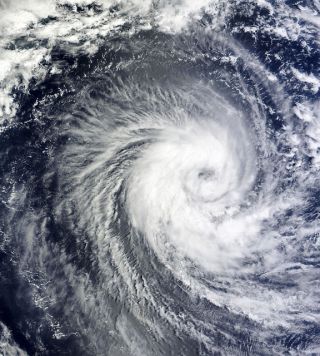Disaster Psychology
Managing the Psychological and Practical Aftermath of Disasters
Building psychological and decision resiliency.
Posted May 8, 2024 Reviewed by Monica Vilhauer
Key points
- Disasters induce feelings of helplessness, hopelessness, and insecurity.
- These emotions and thoughts can produce trauma, anxiety, and other mental health disorders.
- To reduce a disaster's impact on behavioral health, focus on building psychological resiliency.
- Trauma-informed decision-making can help reduce procrastination and inertia.

A natural disaster involves severe weather events that damage our property, life, and physical health. Floods and hurricanes are the most dominant in the U.S., but other perils include fires, earthquakes, tsunamis, and tornados. We are about to enter hurricane season in June, which will inevitably create floods and more devastation. I have been through my share of hurricanes, major Nor'easters that dumped 5+ feet of snow, and flood waters that rise 20 or 30 feet above ground level. As the former head of a CDC-funded academic emergency preparedness center, I've also helped people get "ready" for these significant events, mainly through structural and physical preparations. But, what I've often found is that we neglect the mental health aspect of emergencies.
Disasters, epidemics, and emergencies can all have a profound and lasting impact on our psychological well-being. This can start as a threat well before the disaster begins and may last many years after the event. From the sudden disruption of daily life to the trauma of loss and destruction, the emotional and mental toll can be overwhelming. Possibly because of attention bias, or the realities of climate change, communities are becoming more vulnerable to catastrophic events with an increasing frequency. Even the warnings or forecasts of a disastrous event can trigger stress and changes in behavioral health.
Here, I focus on psychological and decision readiness, including 1) how to build resiliency and manage the behavioral health impact following a disaster and 2) how to limit the noise and interference in your judgment and decision-making.
Psychological Impact of Disasters
Besides the raw emotions of anger and fear, more complex psychological reactions include distressing thoughts, memories, and feelings. Survivors may experience vivid, intrusive recollections of the traumatic event, often accompanied by a sense of intense fear, panic, or emotional detachment. These unwanted memories can arise at any time, day or night, disrupting the individual's ability to function normally. They can quickly turn into anxiety, post-traumatic stress disorder (PTSD), and depression (Neria et al, 2008),
There is also an increase in nervousness, restlessness, and difficulty concentrating. People sometimes notice they engage in avoidance behaviors, consciously or subconsciously, because of the inability to prioritize and make sense of what has happened. Sleep can be disrupted, caused by grief or other emotions. All this makes it difficult to process information about the event and how to best respond. Too much noise and interference result in poor decision-making.
How to Build Psychological Resilience
Resilience is the capacity and ability to bounce back and adapt in the face of adversity. Resilient families and individuals can move beyond these natural disaster events, even those with devastating financial consequences. Resiliency depends on many factors, including the severity of the event and the consequences, as well as age, geography, and economic status, to name a few. Individuals can regain a sense of normalcy and well-being, even in the wake of traumatic events. Prior research has suggested that post-traumatic growth is even possible following loss and tragedy.
One strategy to build psychological resilience is to be aware of your thoughts and emotions. Check-in with how you and your family are feeling, and be open about your thoughts. Time and space allow some room to grieve, but in the meantime, avoid the news and constant chatter about the magnitude of the events and the disturbing scenes of others around you. Check-in with your neighbors and see how they are doing. Practice mindful breathing. Most importantly, focus on what you must do today to protect yourself and your family.
Psychosocial support can help facilitate healing and mitigate the long-term psychological consequences. Trauma-informed therapy can help improve emotional and physical safety. Counseling, community support groups, and increasing time building family and friend relationships can help significantly. Focus on creating a safe, comfortable, and empowering environment for you and your family.
Post-Disaster Trauma-Informed Decision-Making
During emergencies, many people freeze in their ability to make choices, while others jump in with both feet without thinking. When your mind is full of emotions and trauma, it is difficult to know where to focus your attention. You become more susceptible to the extremes involving risk, either taking too much or avoiding risk altogether. This, in turn, impacts your judgment and intuition. Trauma-informed decision-making uses your experience and trauma to help improve your judgment and ability to cope. One way to stay resilient is to focus only on what is right in front of you at that moment. This is admittedly difficult during the first few days, but it is essential to slow down and get some input, advice, and information before making critical choices. Mindfulness techniques and slow breathing can work to calm the mind.
There will be noise that will interfere with your decision-making. You are going to feel decision overload or fatigue, but don't ignore the basics. If you're still in the middle of the situation, call 911 to get EMS or police out if needed. Significant barriers to activating emergency medical services exist even in non-disaster times, and this is escalated significantly during an important event (Seo et al, 2013). Don't be afraid to ask for help.
Assess the entirety of your current situation. Do a thorough walkaround and make a list of anything that has been affected, inside and out. Make a list of everything you find that needs to be worked on. Making a tangible list and putting that on paper reduces anxiety and can help you stay focused.
Before making any decisions, ask yourself how the decision will make you feel. Use that judgment and intuition to help guide your choices. You will want to create a triage system, which converts your list of repairs into categories based on a few factors, such as: immediate versus future tasks, easiest versus more complex and costly tasks, and those you can do yourself versus what you need outside help with.
Remain grounded in the present moment. Don't think too far ahead or let your mind wander, creating incessant worry. Excessive worry can create issues with procrastination or avoidance behaviors. Since you won't be able to get it all done at once, try to become "okay" with that. Do some research before hiring a crew to help do repairs, and always get alternative estimates. Remember, you can take your time on most things. You don't have to make a rapid, rash decision. Consider your options, don't dwell on them too long, and then make some solid choices.
Summary

Disasters can have a profound and lasting impact on the psychological well-being of those affected. Understanding the dominant psychological responses is crucial for building resilience and facilitating healing. Trauma-informed decision-making can also help reduce the overall emotional, physical, and financial consequences of the disaster. Hopefully, these strategies can help you rebuild and recover more rapidly following the next disaster.
References
Neria, Y., Nandi, A., & Galea, S. (2008). Post-traumatic stress disorder following disasters: A systematic review. Psychological Medicine, 38(4), 467-480.
Seo M, Begley C, Langabeer JR, DelliFraine JL. Barriers and disparities in emergency medical services 911 calls for stroke symptoms in the United States adult population: 2009 BRFSS Survey. West J Emerg Med. 2014 Mar;15(2):251-9. doi: 10.5811/westjem.2013.9.18584. PMID: 24926394; www.ncbi.nlm.nih.gov/pmc/articles/PMC4043558




